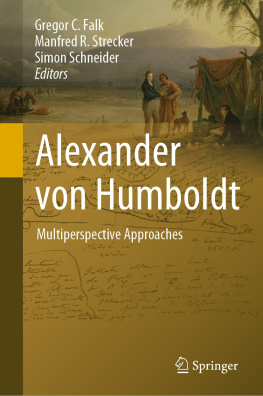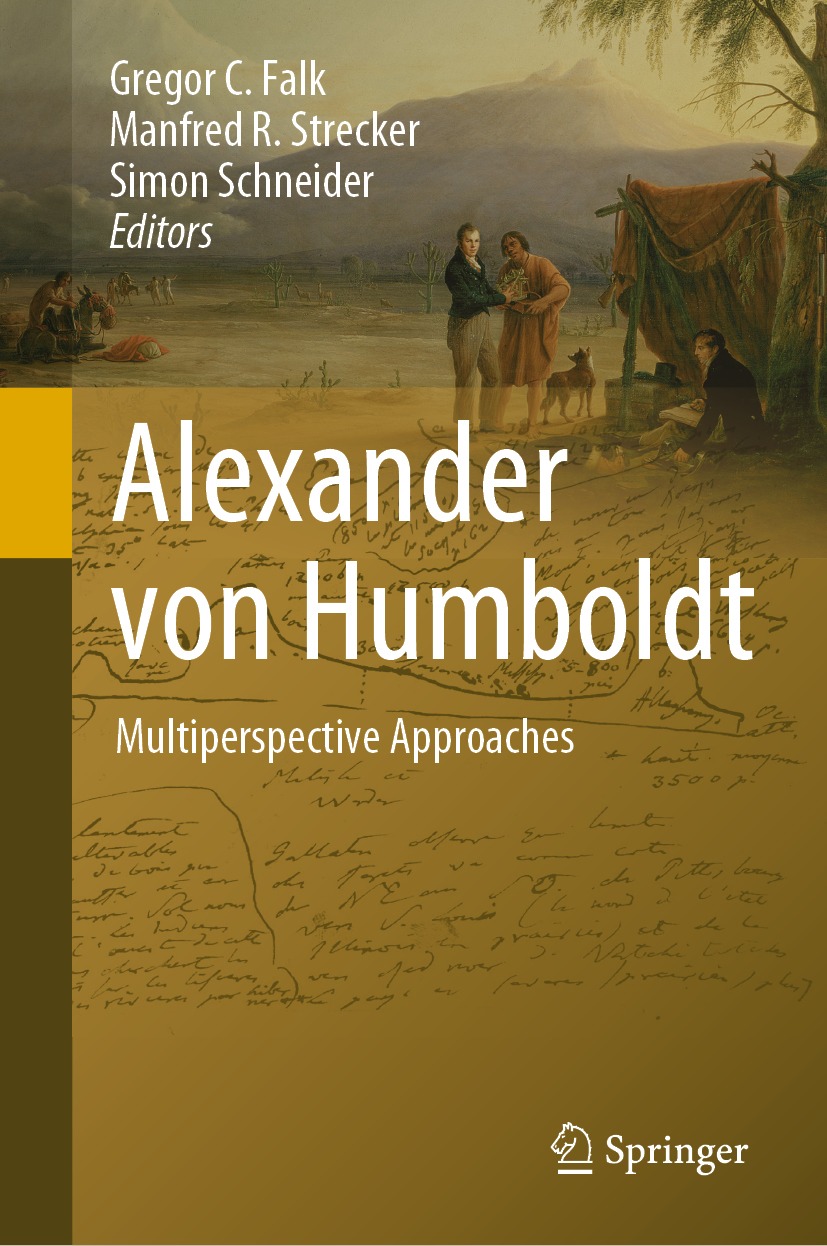Editors
Gregor C. Falk
Institute of Geography, University of Education Freiburg, Freiburg im Breisgau, Baden-Wrttemberg, Germany
Manfred R. Strecker
Institute of Earth and Environmental Science, Universitat Potsdam, Potsdam, Brandenburg, Germany
Simon Schneider
Department of Earth and Environmental Sciences, Geophysics/Forum der Geowissenschaften, Ludwig-Maximilians-Universitt Mnchen, Munich, Germany
ISBN 978-3-030-94007-2 e-ISBN 978-3-030-94008-9
https://doi.org/10.1007/978-3-030-94008-9
The Editor(s) (if applicable) and The Author(s), under exclusive license to Springer Nature Switzerland AG 2022
This work is subject to copyright. All rights are solely and exclusively licensed by the Publisher, whether the whole or part of the material is concerned, specifically the rights of translation, reprinting, reuse of illustrations, recitation, broadcasting, reproduction on microfilms or in any other physical way, and transmission or information storage and retrieval, electronic adaptation, computer software, or by similar or dissimilar methodology now known or hereafter developed.
The use of general descriptive names, registered names, trademarks, service marks, etc. in this publication does not imply, even in the absence of a specific statement, that such names are exempt from the relevant protective laws and regulations and therefore free for general use.
The publisher, the authors, and the editors are safe to assume that the advice and information in this book are believed to be true and accurate at the date of publication. Neither the publisher nor the authors or the editors give a warranty, expressed or implied, with respect to the material contained herein or for any errors or omissions that may have been made. The publisher remains neutral with regard to jurisdictional claims in published maps and institutional affiliations.
David Rumsey Map Collection, David Rumsey Map Center, Stanford Libraries
This Springer imprint is published by the registered company Springer Nature Switzerland AG
The registered company address is: Gewerbestrasse 11, 6330 Cham, Switzerland
Preface
Alexander von Humboldt, one of the most influential natural researchers of all time, has continued to fascinate generations of Earth scientists and biologists with his crossing of boundaries between disciplines and his observations of the natural world that were as far-reaching as they were prescient. Much has changed since Humboldts early integrative studies in South America at the beginning of the nineteenth century: The pace of technological advances has increased enormously, and the disciplines of both Earth and Life sciences have been fragmented into numerous sub-disciplines between which there is less and less collaboration. However, to face todays challenges of global changewith the increasing frequency and magnitude of extreme meteorological events, the progressive depletion of natural resources, the far-reaching impacts of geophysical extreme events, the loss of biodiversity, and the continued expansion of land useit is Humboldts more integrative approach and cross-disciplinary understanding of the Earth system that is needed more than ever.
The end of the twentieth century saw a radical shift in how people perceive Earth and nature. Environmental degradation, climate change, frequent extreme events, and increased competition for natural resources, combined with human vulnerability to natural hazards, moved environmental issues from the fringes of public awareness to the forefront of many government policies. This change in awareness was presaged by paradigmatic shifts in the Earth Sciences themselves that led to the modern view of the Earth as a dynamic system of interactive physical, chemical, and biological processes. As such, the integrated Earth Sciences have provided an essential contribution to the discourse on the direction of environmental and social development in the twenty-first century and now stand at the vanguard of our attempt to cope, on a global scale, with the changes in our natural environment that continue to challenge us, both in our efforts to understand them and in our need to deal with them. The time has thus come to seek holistic research approaches in the different compartments of the Earth system with which to obtain a comprehensive understanding of processes on a variety of timescales. Against the backdrop of current political and social contexts, it is particularly important that this knowledge is made accessible and usable for people with diverse cultural and educational backgrounds. To achieve this, it is imperative to improve knowledge transfer and find new educational approaches to ensure a geoscientific literacy that, in the context of globalization and under the looming specter of global change, will provide societies with the geoinformation necessary to face the challenges of today and tomorrow.
It is important to note that already in the first half of the nineteenth century, Alexander von Humboldt had considered and addressed many of the topics that we are concerned with today. He did this with detailed studies in the fields of geology, geobotany, climatology, paleontology, geophysics, and hydrology, and concerned himself with modern issues that include geothermal resources, hydrocarbons, links between climate change, vegetation cover and erosion associated with human impact, changes in the magnetic field, and the transfer and publication of knowledge. Early on, Humboldt thus paved the way for an integrated Earth System Science approach that is desperately needed today for deciphering, characterizing, and modeling the various forcing factors and their feedback mechanisms that govern the Earth system.
On the occasion of Humboldts 250th birthday and in keeping with his strong belief in the importance of disseminating expert knowledge to the public, the German Academy of Sciences Leopoldina held a symposium for the general public and researchers in Halle, Germany, in June 2019 to assess and highlight Humboldts influence on the various areas of Earth System Science, including life-long learning and the education of the public. Thirteen speakers from a wide range of disciplines addressed Humboldts approaches and his contributions to the analysis of complex problems in Earth System Science.
Inspired by the manifold aspects of Humboldts work presented in Halle, the idea was born to publish a compilation of some of the topics discussed at the symposium in the form of a multiperspective approach. The intention was not to provide another purely scientific collection of the latest research results by Humboldt scholars, but rather to address a wider audience, comprising not only researchers from fields beyond the Earth Sciences but the general public as well. This volume seeks to disseminate the knowledge and insights of and about Humboldt from the perspective of contemporary scientists. Sometimes, these perspectives contradict views currently hold by many scholars and thus provoke an ever new interpretation of Humboldt's life and work. While some of the contributing authors are well-established Humboldt experts, others approach Humboldts work from their own fields of expertise, including but not limited to geology, geography, biology, and education.







